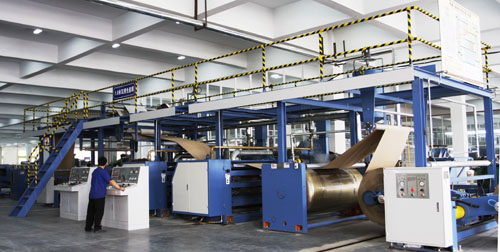Over the past decade, the packaging industry has transformed itself from a protective box into a full-fledged product. From large delivery companies like Amazon, to tech-giants like Apple, to a range of smaller start-ups, packaging has been increasingly playing a central role in how these firms interact with and attract customers.
According to sales managers and branding experts, packaging should be considered in two stages. First of all, the package should be engineered in relation with the type of product. What is the package for? What purpose is the package supposed to fulfill? These are the main questions that should be answered at this stage. Secondly, package developers should consider details such as design, color and feel. While management plays a more important role at the first stage, the second stage focuses on the design.
Unfortunately, the way packaging is currently undertaken in many Iranian firms is far removed from this ideal world.
While packaging was introduced in Iran around the 7th century B.C., head of the service cooperatives division at the Ministry of Cooperatives, Labor and Social Welfare, Alborz Mohammadi argues that lack of expertise, investment and proper management has kept many Iranian firms stuck in the past.
“Cooperatives should attempt to strengthen their branding departments,” suggested Mohamamdi, adding that: “Iranian companies which are successful in branding should also start working on packaging, which so far hasn’t really taken off.”
However, Iranian firms do not yet acknowledge the importance of packaging. In the words of Mohammadi: “Currently the cooperatives, particularly those providing services, do not attach sufficient importance to market development and branding; except for a handful of cooperatives that work in this way.”
The major firms that regularly combine professional packaging with production are those active in the food industry. “Currently, as many as 500 different products including food products, water taps, conserved products, paint, cosmetics and other hygiene products are packaged by cooperatives,” said the official.
Mohammadi also blamed lack of cooperation between cooperatives and the distribution and production sectors for the branding to take a back-seat in Iran; in an interview with Ta’aadol newspaper.
As head of the department of industrial and mining cooperatives, Sadiqeh Khushehchin-Bahar stressed: “It is more important now than ever [for Iranian firms] to look at packaging in a systematic way.”
Packaging in Iran has taken on particular significance since the economy was severely affected following the imposition of sanctions by the western powers (over Iran’s nuclear energy program).
“The economy has a lot of bottlenecks and is faced with liquidity and capital squeeze in the productive sector. Add to that the fact that many [Iranians] have seen their incomes fall drastically and this has made the packaging industry even more crucial,” Khushehchin-Bahar stated.
She also pointed out that some key Iranian export products, notably saffron, are still not packaged properly. Instead, these products are exported in bulk, therefore negatively affecting their prices.
“While the particularities of packaging are completely known in today’s world, unfortunately their economic and social role hasn’t yet been fully understood. The quality of Iranian packaging is much lower than global standards,” the expert told Ta’aadol.
To make the matter worse, some products can simply not be exported because their packaging requirements do not meet the destination market’s environmental standards. Khushehchin-Bahar also complained that the production processes are often only semi-automatized which not only causes irregularities in weight of products, but also lead to lower hygiene standards.


